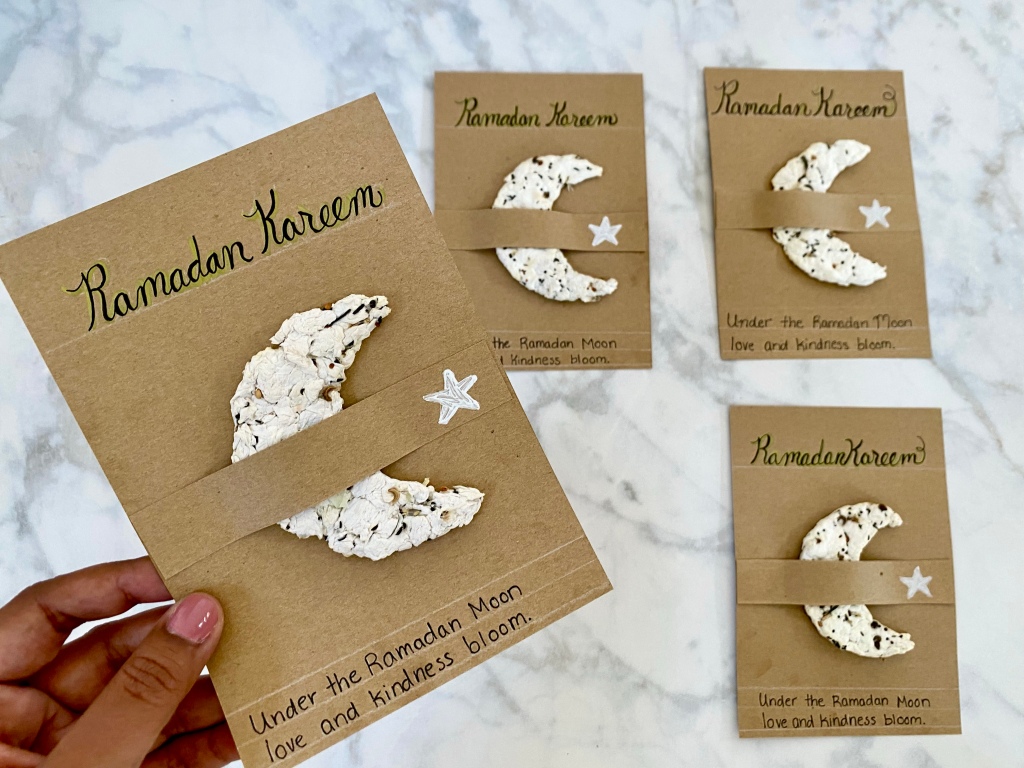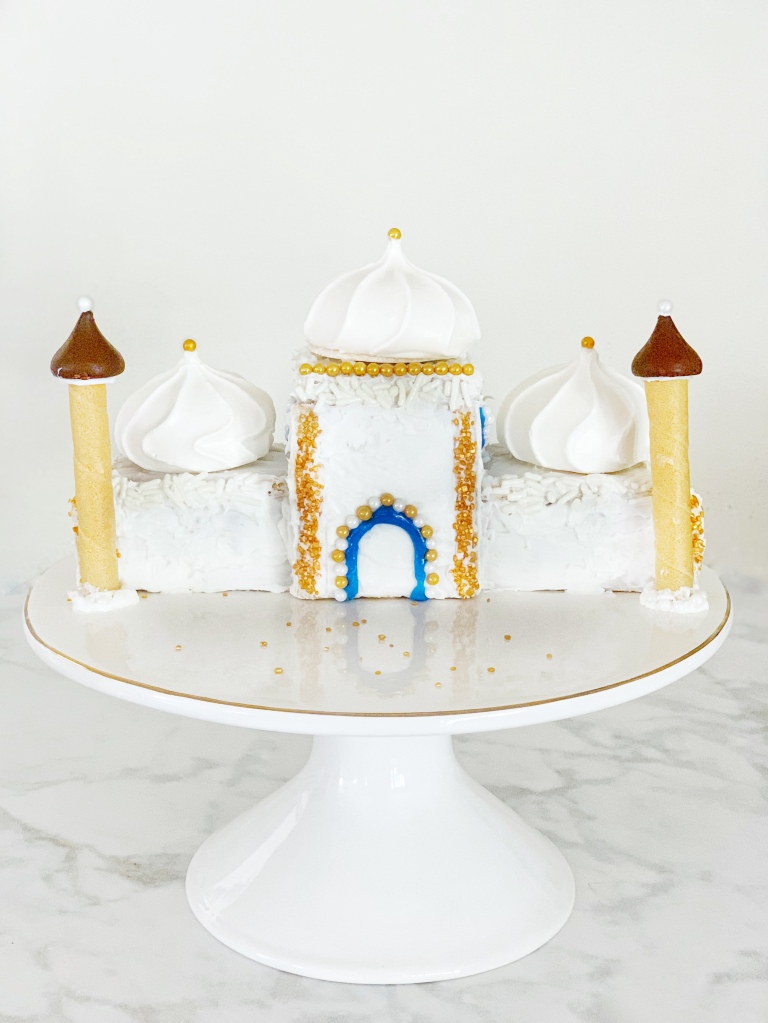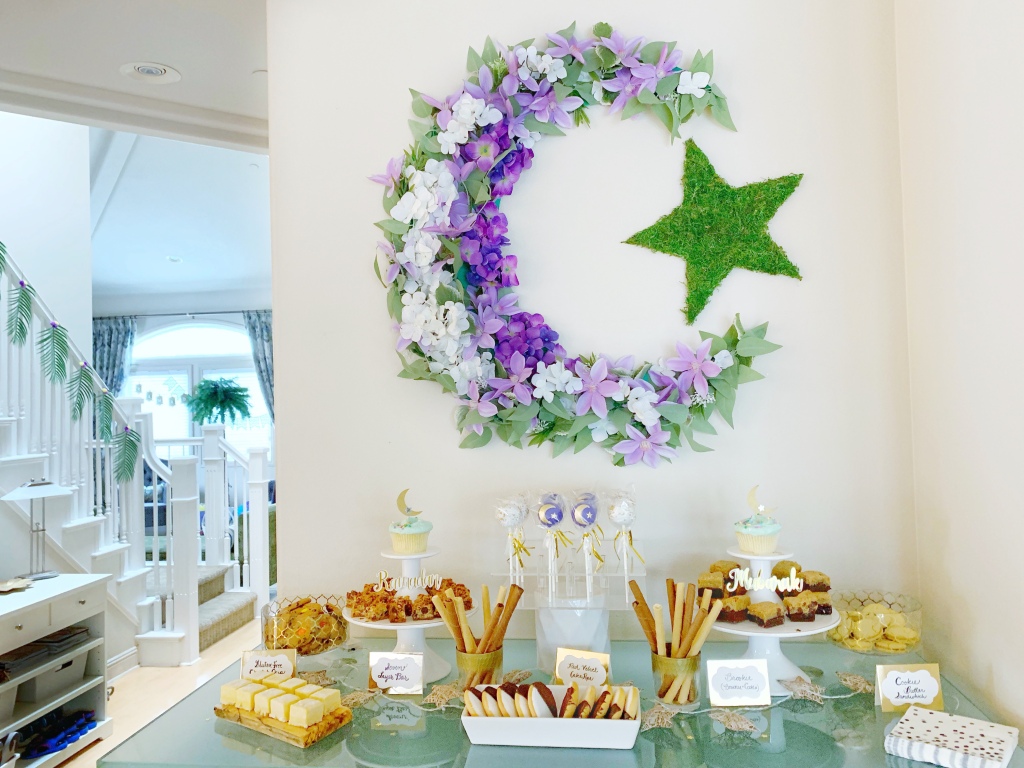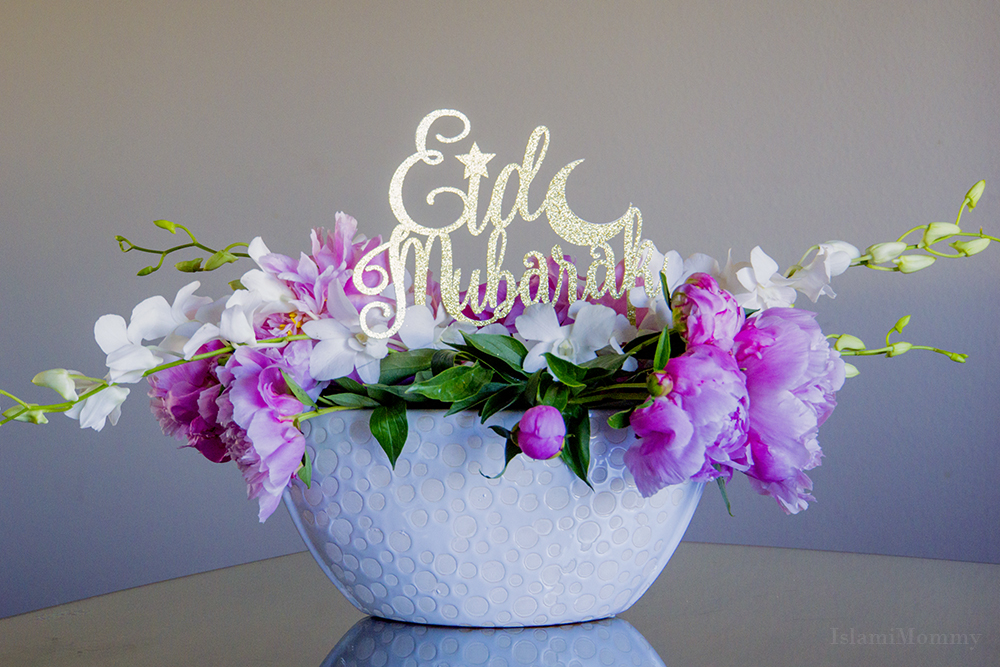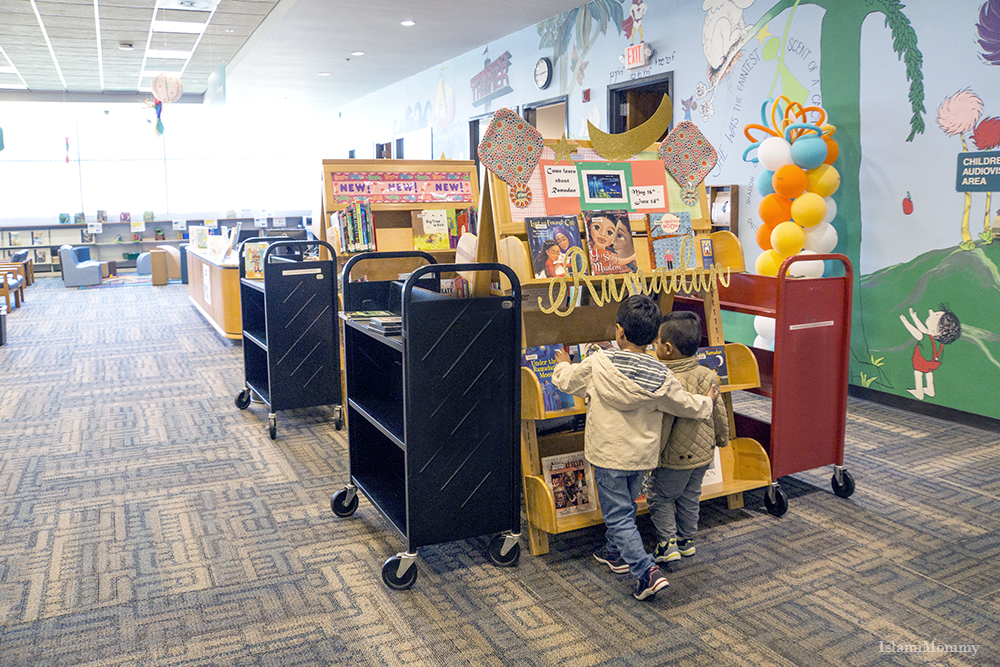For Eid-al-Adha this year, I created a modern Arabic calligraphy art craft for my kids. The Hurufiyya art movement is a high-energy ancestor of traditional Islamic calligraphy. I highly recommend this deep dive from Christies into traditional Arabic calligraphy and modern Arabic calligraphy, “The exalted art of Arabic calligraphy.”
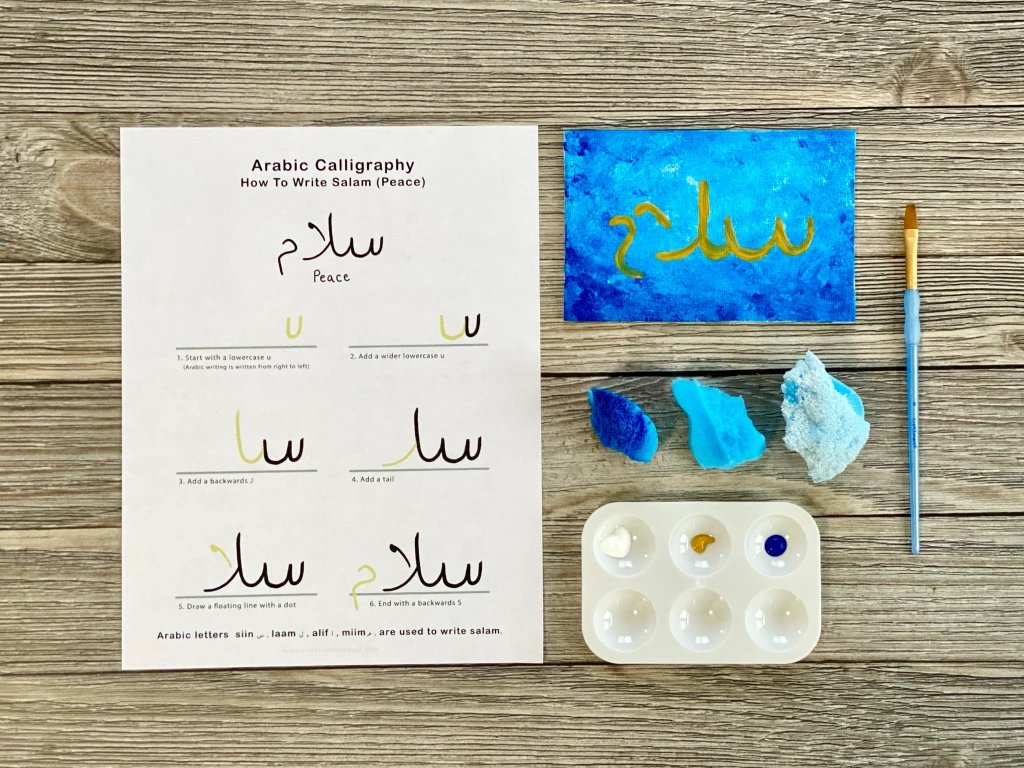
Traditional Arabic calligraphy art has strict rules. Professional calligraphers train with masters for many years. But in the early 20th century, contemporary Arabic calligraphy artists came onto the scene. They deconstructed and altered Arabic letters. There called their movement Hurufiyya from the word hurouf, meaning ‘letter’.
Syrian-born, Iraqi painter, Madiha Umar (1908-2005), was a pioneer in the hurufiyya movement. She wrote in her 1949 text, Arabic Calligraphy: An Inspiring Element in Abstract Art,
“The letter still stands out, so magnificently colourful, fascinating, intricate, and ornamental… The idea dawned on me that Arabic calligraphy, which is abstract and yet so symbolic in its essence, need not be limited anymore to the space-filling of geometrical design.”
Islam’s roots in geometric design have produced some of the more awe-inspiring art and architecture. Hurifiyya is a beautiful extension that allows artists to step out of the box (pun intended.) One of my favorite Hurufiyya artists is Syrian-born Yaser Mohammed Noor Al Gharbi.

MOLLY ANDLESY By YASSER ALGHARBI
This kid-friendly craft celebrates Arabic writing and Hurufiyya art. I purchased all of my supplies from the dollar store! The total cost of the project was $2 per person.
Supplies
- Small canvas or multipurpose craft paper
- New kitchen sponge
- Acrylic paint in blue, yellow, and white
- Paintbrush
- Popsicle sticks (optional, used as a painting tool to create textures on the background)
- My drawing guide, “How To Write Salam In Arabic Calligraphy,” free printable
Share your email below to get the free printable!
In Moon’s Ramadan, my debut picture book from VERSIFY (an imprint of HarperCollins Publishers) I hid the word salam in the steam. Can you find the hidden Arabic in the steam?
Learn more about Moon’s Ramadan.

The step-by-step instructions are in the video. I didn’t go too abstract for the lesson, but the joy of Hurrufiyya art is that once you understand the correct way to write, you can play.
Background
For the background, we painted a peaceful blue place. For me, that was underwater in a swimming pool. For my kids, it was waves and clouds. With the sponge technique, there are so many possibilities.
Calligraphy
For the Arabic calligraphy, I created a printable showing the littlest learners how to write salaam, which means peace, in Arabic.
In Hurufiyya art, Arabic letters are the subject of the painting and also sometimes part of the background. So add more layers of writing to your artwork if you like.
A wonderful book to pair with this craft is “The Arabic Quilt: An Immigrant Story” by Aya Khalil and Anait Semirdzhyan. It shares the story of a third grader, Kanzi, who moves to the U.S. from Egypt. She feels embarrassed about the ways her family is different, from kofta lunches to speaking Arabic. But soon, she learns to celebrate the ways she is different through Arabic writing!

Peace and Salam,
Natasha




